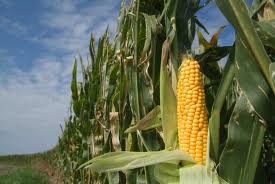Interspecific competition, growth and productivity of maize and pea in intercropping mixture
Keywords:
Competitive ratio, dry matter accumulation, land equivalent ratio, intercroppingAbstract
A field trial was conducted to study the interspecific competition, growth and productivity of maize and pea in intercropping mixture in the department of Crop Botany, Bangladesh Agricultural University from November 2009 to April 2010. In this intercrop association, maize was considered as main crop and pea as intercrop. The experiment comprised of four treatments namely, (i) sole maize, (ii) sole pea, (iii) single row intercropping mixture (1M:1P i.e. single row of maize followed by single row of pea), and (iv) double row intercropping mixture (1M:2P i.e., single row of maize followed by double rows of pea). Dry matter accumulation in cob/pod of each population plants was the maximum in sole cropped plants while that was found minimum in 1M: 2P intercropped plants especially for pea while 1M: 1P intercropped plants ranked intermediate. The 1M:2P combined maize and pea mixture produced maximum seed yield (7.82 t ha-1) which was about 10, 28 and 47% higher yield than the yield obtained from 1M:1P combined mixture stands (7.04 t ha-1), sole maize (5.65 t ha-1) and sole pea (4.15 t ha-1), respectively. The single and double row combined intercropping mixtures gave the highest land equivalent ratio (1.31 and 1.47) and area time equivalent ratio (1.33 and 1.25, respectively). In both 1M: 1P and 1M: 2P intercropping mixtures, maize population exhibited strongly higher competition over pea. The 1M: 1P and 1M: 2P intercropping mixtures generated 1.44 and 1.71-fold higher maize equivalent yield as compared to the yield obtained from maize alone.
References
Awal, M.A., Pramanik, M.H.R. and Hoque, M.A. 2007a. Compatibility analysis of mustard and soybean stands in intercrop association. J. Agrofor. Environ., 1 (2): 53-57.
Awal, M.A. and Khan, M.A.H., 2004. Correlation and path coefficient analysis for green fodder yield and related traits in maize (Zea mays L.). Bangladesh Journal of Crop Science, 13-15: 1–5.
Awal, M.A., Koshi, H. and Ikeda, T. 2006. Radiation interception and use by maize/peanut intercrop canopy. Agric. Forest Meteorol., 139 (1-2): 74-83.
Awal, M.A., Pramanik, M.H.R. and Hossen, M.A. 2007b. Interspecies competition, growth and yield in barley-peanut intercropping. Asian J. Plant Sci., 6 (4): 577-584.
Bhuiya, S.U., Islam, M.M., Uddin, R. M., Salam, A M and Rahman M. M. 2005. Introductory agronomy. Oracle publications 38/2A, Banglabazar Mannan Market (2nd Floor), Dhaka-1100.
Dhingra, K.K., Dhillon, M.S., Grewal, D.S. and Sharma, K. 1991. Performance of maize and mungbean intercropping in different planting and row orientation. Indian J. Agron., 36 (2): 207-212.
Gomez, K.A. and Gomez, A.A. 1984. Statistical Producers for Agril. Res. 2nd Ed. Intl. Rice Res. Inst., John Willy and Sons. New York, p. 139-240.
Hashem. A. and Moniruzzaman, A.F.M. 1986. Effect of intercropping maize with cowpea at varying plant population. Bangladesh J. Agron., 1 (1): 25-35.
Hoque, M.A. 2007. Growth and yield of mustard and soybean in their intercrop association. MS Thesis. Bangladesh Agric. Univ. Mymensingh, p. 24-38.
Martin, J.H., Leonard, W.H. and Stamp, D.L. 1976. Principles of Field Crop Production. 3rd- ed., McMillan Pub. Co. Inc., New York.
Ofori, F. and Stern, W.R. 1987. Cereal-legume intercropping systems. Advances in Agron., 41: 41-90.
Rahman, M.M., Awal, M.A., Amin, A. and Parvej, M.R., 2009. Compatibility, growth and production potentials of mustard/lentil intercrops. Int. J. Bot., 5 (1): 100-106.
Rana, M. M., Bhuiya, M. S. U. and Akhand, M. I. M. 2013. Effect of intercropping of sesbania rostrata with transplant aman rice on yield and profitability. IOSR Journal of Agriculture and Veterinary Science. 2(1):10-14.
Russell, D.F. 1986. MSTAT-C Package Programme. Crop and Soil Sci. Dept., Michigan State Univ., U.S.A.
Singh, S.P. 1983. Intercrop sorghum with legumes. Indian Farm, 33(6): 15- 22.
Singh, V., Kothari, S.K. and Tripathi, H.N. 1986. Studies on intercropping in sugarcane in central Uttar Pradesh. Indian Sug. J. 35: 559-562.
Uddin, B.K.M. 2008. Growth and productivity of wheat and peanut in intercrop association. M.S. Thesis. Dep. Crop Bot., BAU, Mymensingh.
Watson, D.T. 1958. The dependence of net assimilation rate on leaf area index. Ann. Bot., 22: 37-54.

Published
How to Cite
Issue
Section
License
Copyright (c) 2013 Probir Chandra Dhar, M. Abdul Awal, M. Satu Sultan, M. Masud Rana, Aniruddha Sarker

This work is licensed under a Creative Commons Attribution-NonCommercial-NoDerivatives 4.0 International License.



